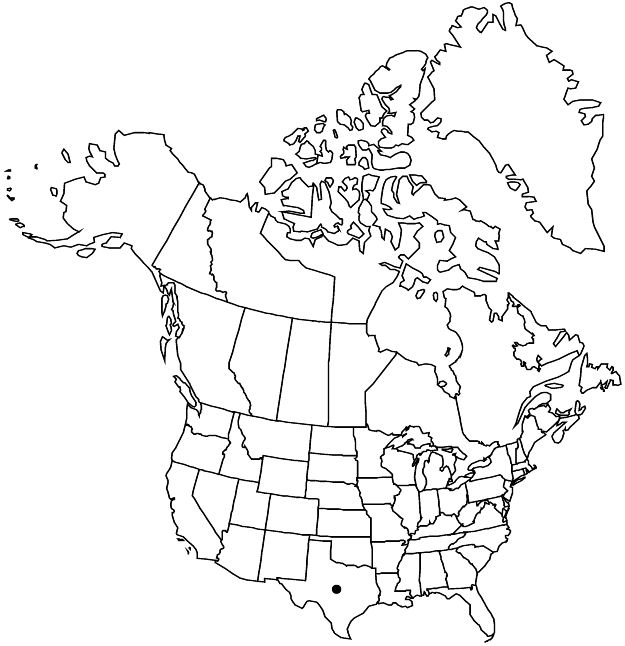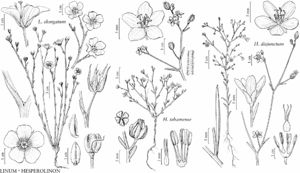Linum elongatum
Nat. Pflanzenfam. ed. 2, 19a: 116. 1931.
Herbs, perennial (sometimes flowering in 1st year), 15–30 cm, glabrous. Stems erect to ascending, branches diffuse. Leaves alternate, ascending; stipular glands present throughout or at distal nodes only; blade linear, 5–25 × 0.5–1 mm, margins entire, sometimes glandular, not ciliate, apex acute. Inflorescences panicles. Pedicels 10 mm. Flowers: sepals deciduous, mostly lanceolate, 6–11 mm, margins not scarious, all conspicuously glandular-toothed, apex attenuate; petals yellow-orange to salmon or brownish red, with prominent wine-colored band proximal to middle, broadly obovate, 14–18 mm; stamens 5–6 mm; anthers 1.5–2.5 mm; staminodia absent; styles connate nearly to apex, 7–9.5 mm; stigmas capitate. Capsules ovoid, 4 × 3 mm, apex obtuse, dehiscing into 5, 2-seeded segments, segment persistence unknown, apex blunt or subacute, minutely apiculate, false septa complete, proximal part membranaceous, not terminating in loose fringe, distal part cartilaginous, margins not ciliate. Seeds 3 × 1.2–1.3 mm. 2n = 30.
Phenology: Flowering Feb–May.
Habitat: Often on hard-packed, often red, sandy soils.
Elevation: 0–300 m.
Distribution

Tex., Mexico (Nuevo León, Tamaulipas).
Discussion
The stems of Linum elongatum are ribbed. In the flora area, it occurs in southern Texas, especially along the Rio Grande, and in south central Texas. The yellow-orange to salmon or brownish red petals with the distinctive wine-colored band proximal to the middle, brick red anthers, and wine-colored stigmas make the flowers of L. elongatum striking.
Selected References
None.
